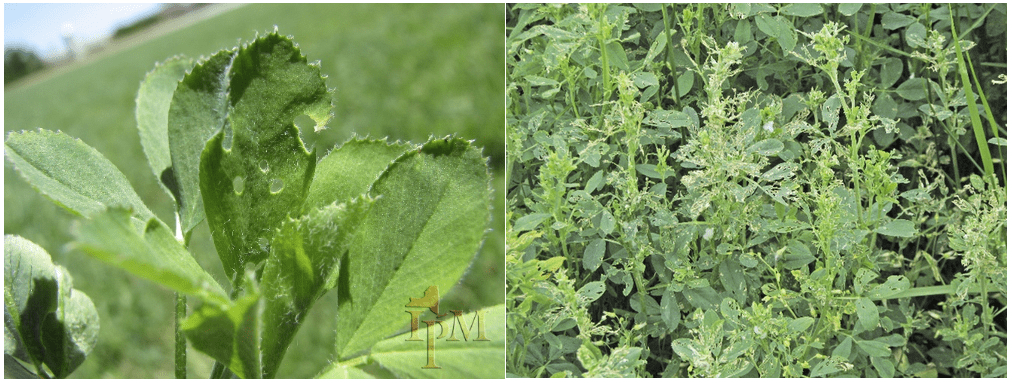Jaime Cummings and Ken Wise, NYS Integrated Pest Management Program

Despite this cold, wet spring, which has delayed planting and other farming efforts across NY, our pests and diseases continue to rear their ugly heads. While the cold had been slowing down some of our insect pests, the alfalfa weevil has been detected in some fields, though currently at low numbers. This serves as a reminder that we need to continue to be vigilant with our scouting efforts for early detection of pests to make sound management decisions.

Keep in mind that the alfalfa weevil overwinters in NY and is typically more of a problem in established stands where they emerge in the spring and lay eggs in alfalfa stems. The larvae cause the most of the damage as they go through four instar growth stages; and the fourth instar causes the most damage (Fig. 1). Feeding damage from this pest initially looks like small shot-holes in the leaves in the upper canopy, but can quickly progress toward defoliation under high pest pressure (Fig. 2). During a cold spring, like we are currently experiencing, the alfalfa usually develops faster than the weevils, and we’ll see a delay in weevil emergence and feeding damage. This year, we are a couple weeks behind when we usually start seeing noticeable damage, and you want to get out scouting now for the weevils and continue to do so weekly through first harvest and early regrowth.

Scouting for the alfalfa weevil involves walking a random pattern in the field and stopping to collect a stem every 10 steps. Once you have 10 stems, visually inspect the stems for weevil tip-feeding injury, and count each stem showing tip-feeding injury within the top three inches to determine a percentage of damaged stems. Repeat this collection of 10 random stems five more times throughout the field for a total of 50 stems inspected. Repeat this scouting in different patterns within the field weekly.
Follow the established action thresholds based on harvest schedules. Before first cutting, if 40% of the stems have damage, then management options should be considered. If approaching threshold, early harvest is a good option. Otherwise, if you’re unable to manage with an early harvest, and weather permitting, you may consider an insecticide application. Always consult label instructions and follow Cornell Guidelines for pesticide applications. Given our ‘late’ spring and late emergence of this pest, an early harvest this year will likely be sufficient for management in fields at high risk or at threshold. After harvest, always check the regrowth regularly for signs of feeding. If 50% of the regrowth shows damage and larvae are <3/8” long, then you may need to consider a follow-up insecticide application. But, keep in mind all factors when considering an insecticide application, including cost, pre-harvest intervals, and weather constraints. And remember, mixed stands with <50% alfalfa or poor stands of alfalfa should not be sprayed for this pest, because the return on investment is not likely in those situations. Never spray alfalfa that is in bloom. Not only is it illegal, but it endangers many pollinators and other beneficial insects. Keep in mind that at least 13 species of natural biocontrol parasites of this pest exist in NY, and each pesticide application aimed at managing the weevil also kills off your beneficial insects and parasites. The more beneficial parasites you have, the less likely you’ll have alfalfa weevil issues above threshold.


